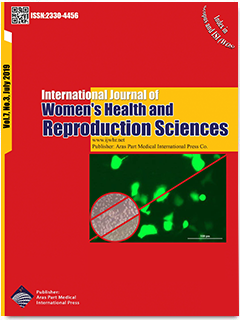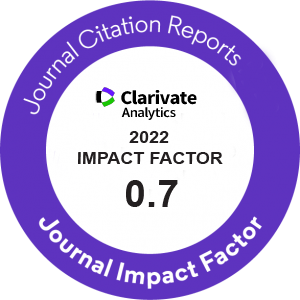| Original Article | |
| Unintended Pregnancy in Iran: Prevalence and Risk Factors | |
| Amir Almasi-Hashiani1,2, Reza Omani-Samani3, Mahdi Sepidarkish4, Farzad Khodamoradi5, Mehdi Ranjbaran3,6 | |
| 1Department of Epidemiology, School of Health, Arak University of Medical Sciences, Arak, Iran 2Traditional and Complementary Medicine Research Center (TCMRC), Arak University of Medical Sciences, Arak, Iran 3Department of Medical Ethics and Law, Reproductive Biomedicine Research Center, Royan Institute for Reproductive Biomedicine, ACECR, Tehran, Iran 4Department of Biostatistics and Epidemiology, Babol University of Medical Sciences, Babol, Iran 5Department of Community Medicine, School of Medicine, Dezful University of Medical Sciences, Dezful, Iran. 6Department of Epidemiology and Biostatistics, School of Public Health, Tehran University of Medical Sciences, Tehran, Iran |
|
|
IJWHR 2019; 7: 319?323 DOI: 10.15296/ijwhr.2019.53 Viewed : 6186 times Downloaded : 2475 times. Keywords : Unintended pregnancy, Risk factors, Iran |
|
| Full Text(PDF) | Related Articles | |
| Abstract | |
Objectives: Unintended pregnancy, as one of the main issues in reproductive health, is defined as a mistimed or unwanted pregnancy all over the worlds. This study aimed to determine the prevalence and risk factors of unintended pregnancy among Iranian women. Materials and Methods: As part of a survey on twin or multiple pregnancies in Tehran, Iran, this cross-sectional study considered a total of 5152 deliveries in 103 hospitals during 2015. The required data were gathered at the time of delivery or within the next 2-3 days from physically unstable women. The sampling was carried out within two weeks. All women, regardless of method of delivery, being primiparous or multiparous, and pregnancy outcome were included in the study. Results: According to the results, the prevalence of unintended pregnancy in Iran was estimated 19.81%. Based on univariate analysis, the mean age of mothers, the mean age of fathers, number of pregnancies, and number of deliveries in unintended pregnancies were significantly higher than those in intended pregnancies. In addition, the prevalence of unintended pregnancy among housewives, as well as women with low levels of education and income was high. According to multiple logistic regression analysis, economic status and number of deliveries were the main predicting factors of unintended pregnancy. Conclusions: In general, the prevalence of unintended pregnancy in Iran is lower than that in other countries. However, preventive actions and health education programs still should be undertaken for mothers in order to minimize the prevalence of unintended pregnancies, thereby reducing the consequences for mother and baby. |
Cite By, Google Scholar
Google Scholar
PubMed
Online Submission System
 IJWHR ENDNOTE ® Style
IJWHR ENDNOTE ® Style
 Tutorials
Tutorials
 Publication Charge
Women's Reproductive Health Research Center
About Journal
Publication Charge
Women's Reproductive Health Research Center
About Journal
Aras Part Medical International Press Editor-in-Chief
Arash Khaki
Mertihan Kurdoglu Deputy Editor
Zafer Akan























